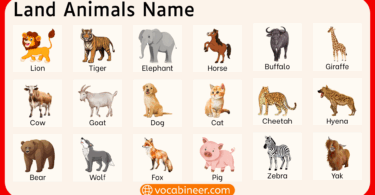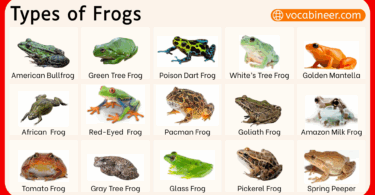Learning types of flowers names in English helps students, kids, and ESL learners talk about plants, gardens, gifts, and seasons with better vocabulary. From common flowers like rose and lily to rare blooms such as daffodil or peony, this topic builds stronger memory through word-picture learning. In this post, you’ll explore 101 flowers names with pictures, grouped by use and color, to boost your English and make nature-based conversations easier. Perfect for visual learners, school projects, and daily language growth.
In This Page
Types of Flowers in English with Pictures for Easy Learning
Below is a list of the most popular types of flowers in English with pictures to help you learn easily. Each flower is shown with its name and picture so you can quickly recognize and remember it:
- Roses
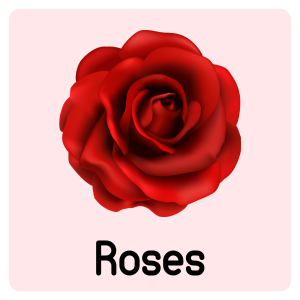
- Lilies
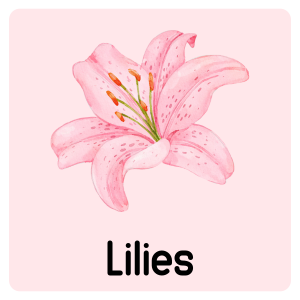
- Hibiscus
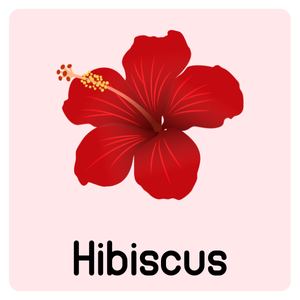
- Tulips
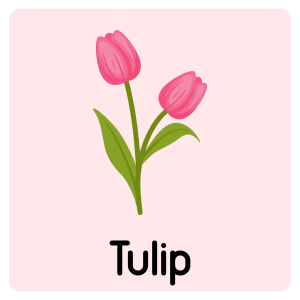
- Daisies
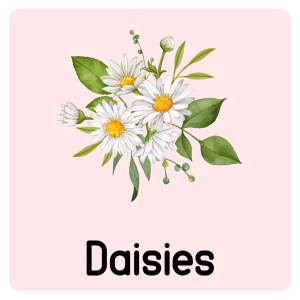
- Sunflowers
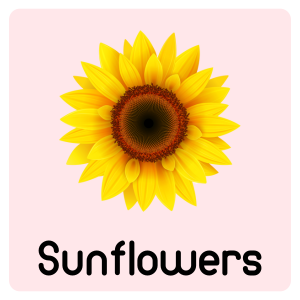
- Orchids
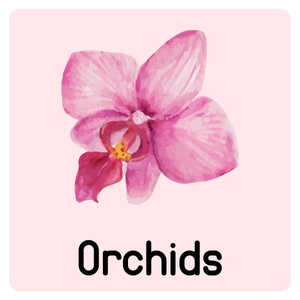
- Carnations
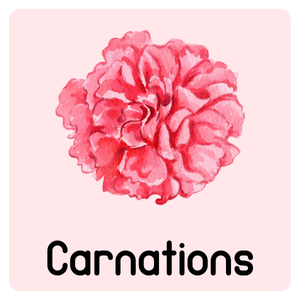
- Marigolds
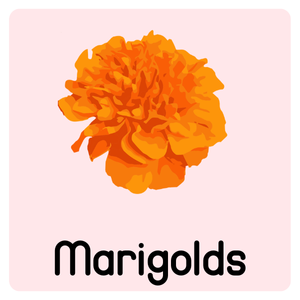
- Lotus
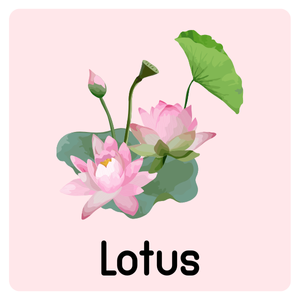
- Daffodils
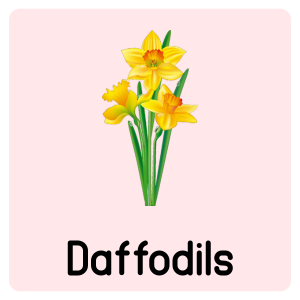
- Lavender
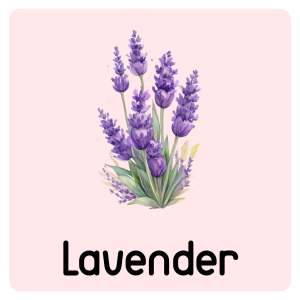
- Jasmine
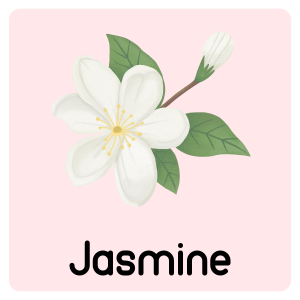
- Peonies
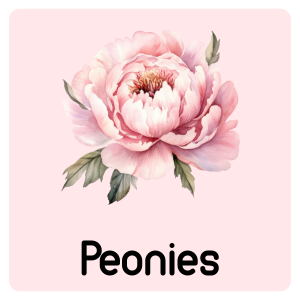
- Geraniums
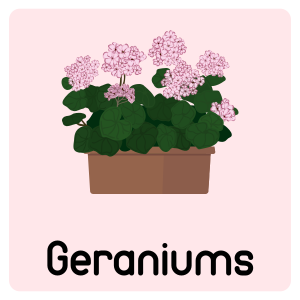
- Zinnias
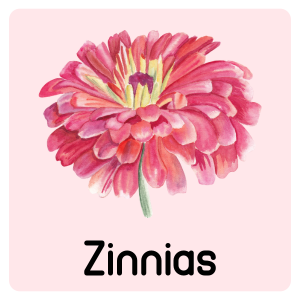
- Petunias
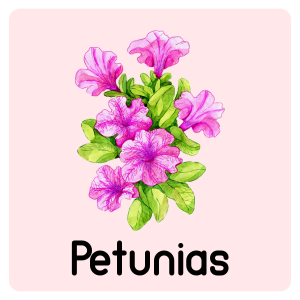
- Iris

- Pansies

- Anemones

Common Flower Names in English Used in Daily Life
Flowers are a part of our everyday life — from gifts and decorations to gardens and festivals. Learning common flower names in English helps you recognize them easily and use them in daily conversations. Below is a list of popular flowers with simple meanings and descriptions.
- Rose – Symbol of love, beauty, and passion; found in red, pink, white, and yellow.
- Lily – Elegant flowers linked to purity, devotion, and peace.
- Sunflower – Bright yellow blooms that follow the sun, symbolizing happiness.
- Tulip – Spring flowers representing cheerfulness, warmth, and affection.
- Daisy – Simple flowers that stand for innocence, purity, and new beginnings.
- Marigold – Orange or yellow flowers used in festivals, symbolizing positivity.
- Jasmine – Fragrant white blossoms associated with love, peace, and purity.
- Orchid – Exotic flowers that represent beauty, strength, and luxury.
- Lotus – Sacred flower in many cultures, symbolizing purity and rebirth.
- Hibiscus – Large tropical flowers linked with energy, beauty, and femininity.
- Lavender – Purple flowers with calming fragrance, symbolizing serenity.
- Carnation – Colorful blooms often used in bouquets, symbolizing love and admiration.
- Chrysanthemum – Popular in fall, symbolizing loyalty, longevity, and joy.
- Peony – Lush flowers that symbolize romance, wealth, and good fortune.
- Daffodil – Yellow spring flowers representing new beginnings and hope.
- Magnolia – White or pink blossoms symbolizing dignity, nobility, and beauty.
- Poppy – Bright flowers that symbolize remembrance and peace.
- Camellia – Elegant flowers symbolizing gratitude, love, and admiration.
- Violet – Small purple flowers linked with modesty, faithfulness, and loyalty.
- Gardenia – Fragrant white flowers representing purity, trust, and sweetness.
- Geranium – Bright garden flowers symbolizing friendship and positivity.
- Hydrangea – Big clusters of blossoms that symbolize gratitude and abundance.
- Snowdrop – Delicate white flowers that bloom in late winter, symbolizing hope.
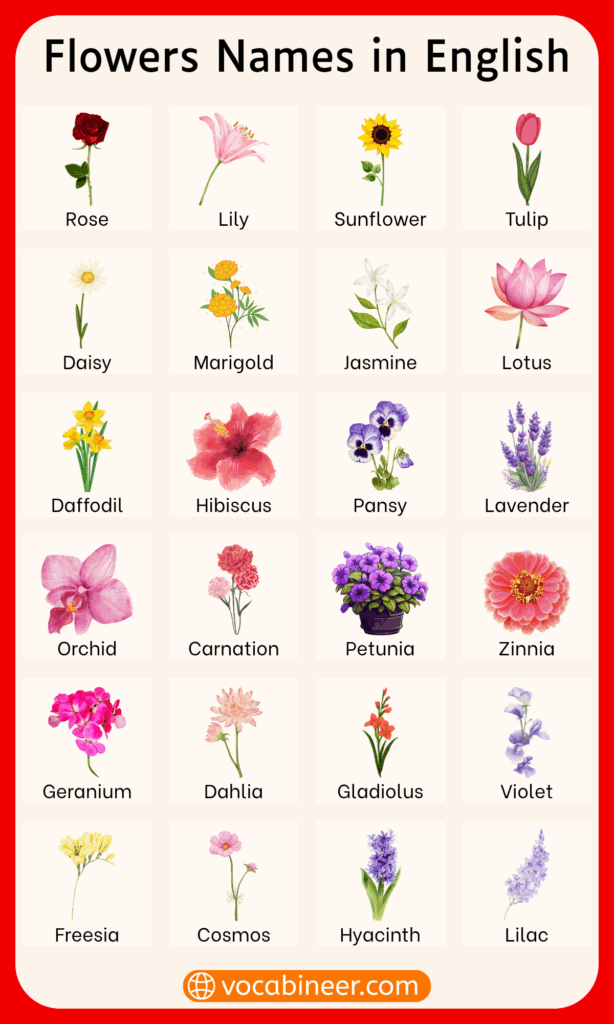
List of Seasonal Flowers Names in English
Flowers bloom in different seasons, and knowing their names can help you understand when they are most commonly seen. Learning seasonal flowers in English makes it easy to connect each flower with spring, summer, fall, or winter. Below is a list of seasonal flowers in English:
Spring Flowers
- Tulip
- Daffodil
- Hyacinth
- Cherry Blossom
- Iris
Summer Flowers
- Sunflower
- Zinnia
- Marigold
- Cosmos
- Geranium
Fall Flowers
- Chrysanthemum
- Goldenrod
- Sedum
- Pansy
- Aster
Winter Flowers
- Camellia
- Hellebore
- Winter Jasmine
- Snowdrop
- Cyclamen
Garden Flowers Names in English for ESL Learners
Garden flowers are planted in homes, parks, and schools. Their names help learners talk about plants around them.
- Petunia: Small trumpet-shaped flowers. Comes in purple, pink, and white.
- Zinnia: Round blooms with bright colors. Grows in warm months.
- Geranium: Flower clusters on long stems. Used in home gardens.
- Begonia: Shiny leaves and colorful petals. Good for shade gardens.
- Pansy: Small with dark patterns. Grows well in cool weather.
- Impatiens: Shade-loving plants with red, pink, or white blooms.
- Snapdragon: Tall plants with flowers that open like a mouth.
Tropical Flowers Names in English with Examples
Tropical flowers grow in warm climates and have bold shapes and colors.
- Hibiscus: Big flower with a long center. Used in teas and decorations.
- Plumeria: Soft-scented flower used in leis and garlands.
- Bird of Paradise: Bright petals shaped like a bird. Very striking.
- Bougainvillea: Vine plant with pink or purple paper-like flowers.
- Heliconia: Red, yellow, and orange bracts that point up or down.
- Orchid: Grows in many forms. Known for its beauty and variety.
- Frangipani: Smooth petals with a sweet scent, white or pink.
Wildflowers Names in English with Identification Tips
Wildflowers grow without planting. They are common in fields, forests, and roadside areas.
- Bluebell: Small blue bell-shaped flower. Grows in spring.
- Buttercup: Yellow, glossy petals. Seen in open meadows.
- Poppy: Red petals with black center. Found in many wild areas.
- Dandelion: Yellow flower that turns into a white puffball.
- Aster: Small purple or white flowers with yellow centers.
- Black-eyed Susan: Yellow petals with a black center.
- Yarrow: Clusters of tiny flowers, white or pink.
Color-Based Flower Names in English
Flowers come in many shades, and learning color-based flower names in English makes them easy to remember. From red roses to yellow sunflowers, each color has its own meaning. Below is a list of popular flowers by color to help you learn quickly and clearly.
Red Flowers
- Rose
- Poppy
- Tulip
- Zinnia
Pink Flowers
- Peony
- Carnation
- Begonia
- Camellia
Yellow Flowers
- Sunflower
- Marigold
- Daffodil
- Buttercup
White Flowers
- Lily
- Jasmine
- Snowdrop
- Gardenia
Each group helps learners spot, name, and use color words with flowers.
50+ Popular Flowers Names in English with Images
Below is a list of 50+ popular flowers names in English, grouped for quick learning through images and categories.
- Rose
- Tulip
- Lily
- Sunflower
- Daffodil
- Orchid
- Marigold
- Hibiscus
- Jasmine
- Peony
- Geranium
- Zinnia
- Pansy
- Camellia
- Begonia
- Lavender
- Carnation
- Dahlia
- Iris
- Chrysanthemum
- Petunia
- Snapdragon
- Cosmos
- Bluebell
- Poppy
- Daisy
- Lotus
- Frangipani
- Bougainvillea
- Plumeria
- Bird of Paradise
- Anemone
- Yarrow
- Aster
- Black-eyed Susan
- Snowdrop
- Winter Jasmine
- Impatiens
- Goldenrod
- Hellebore
- Cyclamen
- Sedum
- Buttercup
- Morning Glory
- Sweet Pea
- Foxglove
- Larkspur
- Freesia
- Calendula
- Bellflower
FAQs About Types of Flowers in English
Some of the most common flowers are Rose, Lily, Sunflower, Tulip, Daisy, and Orchid. These are easy to recognize and often used in daily conversation.
The best way is through pictures and short descriptions. Visual learning makes it easier to remember flower names and connect them with their appearance.
The Rose is often called the “queen of flowers” because of its beauty, fragrance, and symbolic meaning of love.
Yes, flower names in English are widely understood internationally, especially in gardening, floristry, and education.
Start with simple and popular flowers like Rose, Sunflower, Daisy, Lily, and Tulip. These are commonly seen and easy to remember.
Read More



